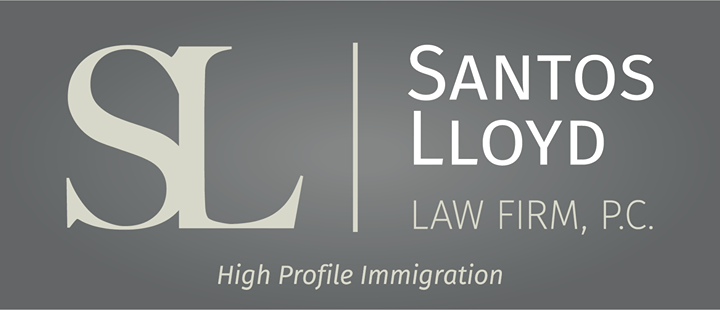What are the two ways you can file for Asylum?
April Perez • August 25, 2022
Asylum is an application that allows an individual to remain in the United States instead of being removed or having to return to their home country where he or she fears persecution or harm. An asylum application can be filed one of two ways.
Affirmative Asylum
An affirmative application for asylum can be filed by someone who is not in removal proceedings (immigration court). The person can file their application and evidence with the asylum office that corresponds to the area where they live. Once the person is scheduled for an interview the interview will be conducted at the asylum office with a USCIS officer. If the person has an attorney their attorney may also be present at the interview along with a translator if one is needed. The applicant will be placed under oath and the officer will ask questions about the application to confirm and update information in the application. The officer will also ask questions about the persecution that was suffered by the individual in their home country. A decision is usually given by mail, or the decision will need to be picked up in person by the applicant at the asylum office at a date and time designated by the officer. If the case is denied and the applicant is not in status, he or she will be referred to immigration court and have an opportunity to present their case before the immigration judge. If the person is still in status, they may continue in their current status.
Defensive Asylum
A defensive application for asylum is requested by an individual who is already in removal or immigration court proceedings. The person has either been referred to the court when they received a Notice to Appear, or they turned themselves in at the border and requested asylum. The application and evidence are submitted to the court and once the merits hearing or individual hearing (last hearing) is scheduled the applicant will have an opportunity to testify as to the persecution suffered in their home country. The judge will either give a decision at the end of the hearing or issue a written decision that will be received by mail at a later date. If the case is denied the applicant can appeal their case to the Board of Immigration Appeals (BIA) otherwise they will have to follow the instructions in the judge’s decision in regard to their removal.
If you think that you may qualify for asylum please feel free to contact our office.
This blog is not intended to be legal advice and nothing here should be construed as establishing an attorney client relationship. Please schedule a consultation with an immigration attorney before acting on any information read here.
Similar Posts

Under the new regulation, if a person filed or files Form I-589, Application for Asylum and for Withholding of Removal after October 1, 2024, and the application remains pending with USCIS for 365 days, the applicant must pay an Annual Asylum Fee (AAF) on the one-year anniversary of his or her filing date.

As of April 1, 2024, USCIS has instituted an inflation adjustment to immigration application filing fees . These fee increases apply to a majority of the different application types, including family-based, non-immigrant, and immigrant petitions. As a part of these fee increases, USCIS has also instituted a new program designed to provide funding to the United States’ Asylum Program, in order to better address the massive backlog of pending asylum claims currently waiting to be adjudicated. Unfortunately, these changes have led to confusion among petitioners for when they are required to pay the Asylum Program Fee, and when they may qualify for a 50% or complete exemption from the fee. The Asylum Program Fee is required to be submitted by employers in all I-129 and I-140 petitions filed on or after April 1, 2024. The Asylum Program Fee is $600, however, certain exemptions apply . Small employers , defined as having 25 or fewer total employees, qualify for a reduction of the Asylum Program Fee, but are still required to submit a reduced fee of $300. Individual petitioners, or self-petitions, such as in the case of an EB-2 National Interest Waiver, are considered small employers for the purpose of the Asylum Program Fee and are also required to submit the reduced $300 fee. Non-profit organizations are exempted from the Asylum Program fee and are not required to submit any additional funds with the ordinary I-129 or I-140 filing fee. In addition, non-profits qualify for a 50% reduction of the ordinary filing fee in certain types of applications, bringing the overall filing fee burden down substantially for non-profit organizations. With these changes to USCIS’ filing fee schedule, USCIS is hoping for significant improvements to efficiency and processing for pending asylum applicants. If you or your petitioning organization need any assistance in preparing an application for an immigration benefit, including ensuring proper compliance with the new fee requirements, our office is ready and waiting to help!

Once you have connected with a college program, have been admitted to the school, and deemed eligible to compete athletically, you will need to secure an F-1 student visa in order to actually attend your new college and begin your time as a student athlete. The first step in the visa process is to receive your Form I-2

For many talented athletes around the world, U.S. college athletics represent a remarkable opportunity to combine elite athletic competition with higher education. In sports such as basketball, soccer, track and field, and tennis, among others, hundreds of colleges and universities across the United States offer struct

Under the new regulation, if a person filed or files Form I-589, Application for Asylum and for Withholding of Removal after October 1, 2024, and the application remains pending with USCIS for 365 days, the applicant must pay an Annual Asylum Fee (AAF) on the one-year anniversary of his or her filing date.



